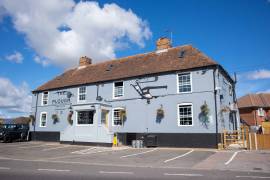Scotch:
what's in a name?
Once again, the normally placid loch waters of the Scotch whisky world are thrashing like a piranha tank. Andrew Jefford brings some transparency to proceedings
You may recall me writing in December 2003 about the Cardhu controversy. This was the single malt whisky whose sales had grown so torridly on the Spanish market (14,000 cases worldwide in 1990; 270,000 cases, most of them in Spain, by 2003) that supplies were threatened.
Owner Diageo's Peckham-style solution in the summer of 2003 was to turn a single malt into a vatted malt in other words, blend in other malt whiskies to make "loadsa product". The fatal flaw in the company's cunning plan was to go on calling it Cardhu, merely changing the colour of the box and renaming the "single malt" as a "pure malt".
The rest of the industry, the fourth estate and even the All-Party Commons Scotch Whisky Group showed Diageo the red card. The company blustered for a while, but eventually backed down, and Cardhu reverted to its original status as a true single-malt whisky.
This little dust-up drew the industry's attention to a glaring omission in the governance of the trade: the fact that no official definitions exist for the different types of whisky that consumers will find in bars, pubs and on shop shelves.
Let me just resume the types for you as briefly as I can. Single malt whisky is made from malted barley alone, and distilled using pot stills at one named distillery. Single grain whisky is made from a mixture of cereals including wheat and corn, and distilled using continuous stills at one named distillery. Blended whisky is a mixture of malt and grain whisky. Vatted malt is the traditional name for a blend of malts, and in theory vatted grain would be the name for a blend of grains, though such products are rare.
Mighty definition
To tackle the mighty definition question, a working group of big cheeses from all the leading companies met over a 12-month period, and finally issued a set of proposals. According to Scotch Whisky Association (SWA) director Campbell Evans, this is "the most comprehensive consideration of what Scotch whisky is since the 1909 Royal Commission". (Mr Evans' reference takes us back to a celebrated case brought and won by Islington Borough Council in the North London Police Court in 1906, alleging that only malt whisky was true Scotch whisky, and that grain spirit was an imposture. Needless to say the big companies lobbied for a Royal Commission which eventually, three years later, found in their favour.)
The critical definitions are those for single malt, vatted malt and blended whisky, and most spectators assumed that the final wording would follow the outline I give above. Wrongly. What is being proposed is that we have single malt, single grain, blended, blended malt and blended grain. The term "pure malt" is to be banned.
Press reaction has been incredulous. In the words of Whisky Magazine editor Dominic Roskow, the new definitions "take the one word that was previously well-defined in all of this blends and allows it to cross the river from the bank marked malt and other grains' to the one marked just malts'." The astute whisky writer Dave Broom claims this new use for the word "blend" has left everyone "bewildered. Though its intention was good, the SWA committee has led the industry up the wrong escalator and, rather than depositing us all at the correct destination, has dumped us in the car park."
Broadly speaking, I concur. "Malt" and "blends" have always been the alpha and the omega, the north pole and the south pole, the day and night of whisky production as far as the consumer is concerned. The idea that we will now have a "blended malt Scotch whisky" muddies the waters, and most ordinary consumers will be hard pressed to tell the difference between that and a "blended Scotch whisky". What on earth was wrong with the lovely word "vatted"?
According to Campbell Evans, "industry experience is that consumers don't understand the term and find it unattractive due to its industrial connotations." This surprises me, especially since a high percentage of malt drinkers aren't even native English speakers. Even if it was true, so what? If the product's good enough, the perception of the word will soon change.
Added protection
The SWA emphasises the fact that the proposals are now subject to wide-ranging consultation, and press and trade feedback will be taken into account. It also mentions that "added protection is being sought for traditional regional names, namely Highland, Lowland, Speyside, Islay and Campbel-town," which is good news, as is the proposal "that a distillery name should not be used on any Scotch whisky that has not been wholly distilled in the named distillery".
Nothing, though, about requiring malt to be aged and bottled at that same named distillery, which is a shame but hardly surprising, given the centralised warehousing of the big players. Whisky producers sometimes talk fondly about "the chateau concept" for their single malts, but that majestically upmarket model seems likely to elude us for a wee while yet.















